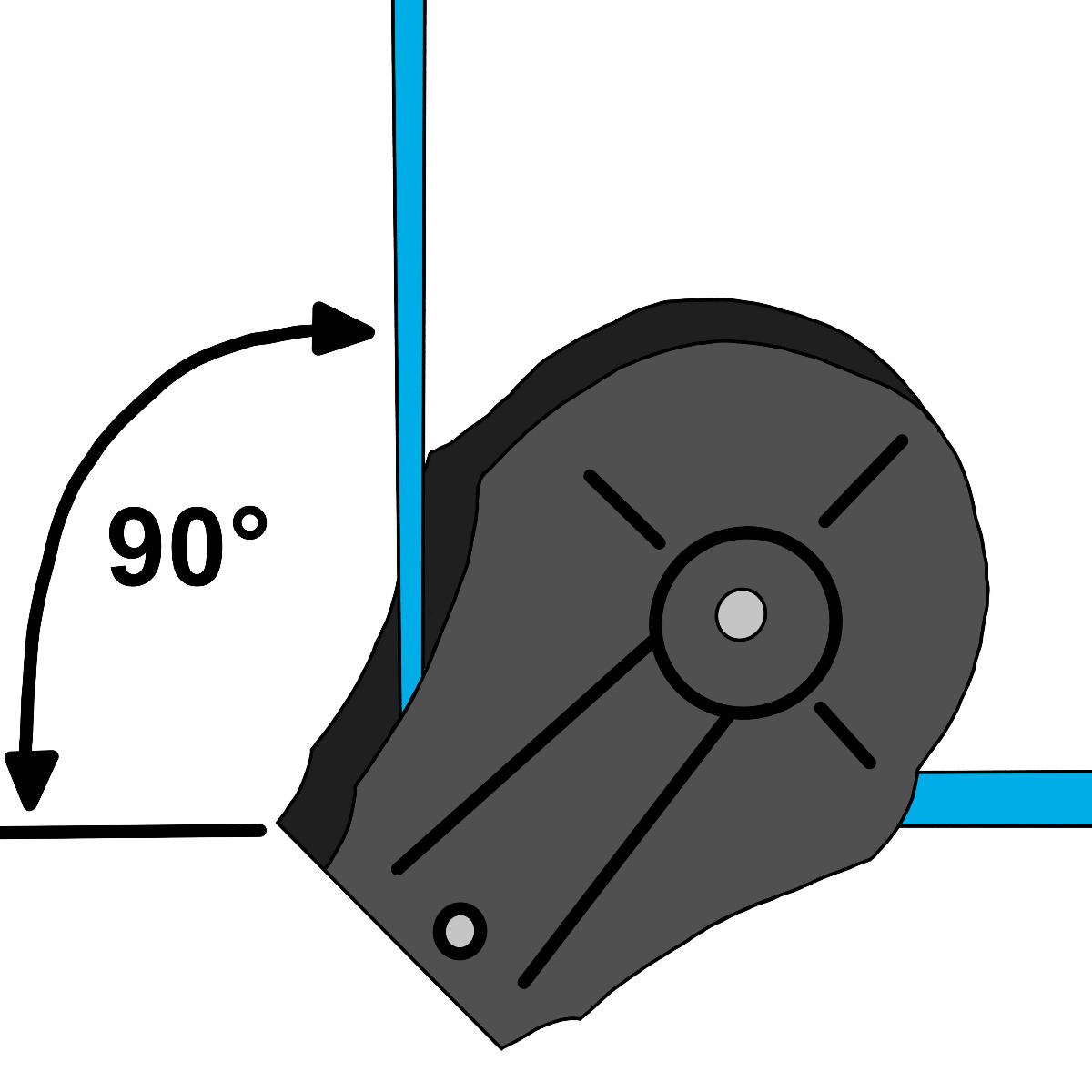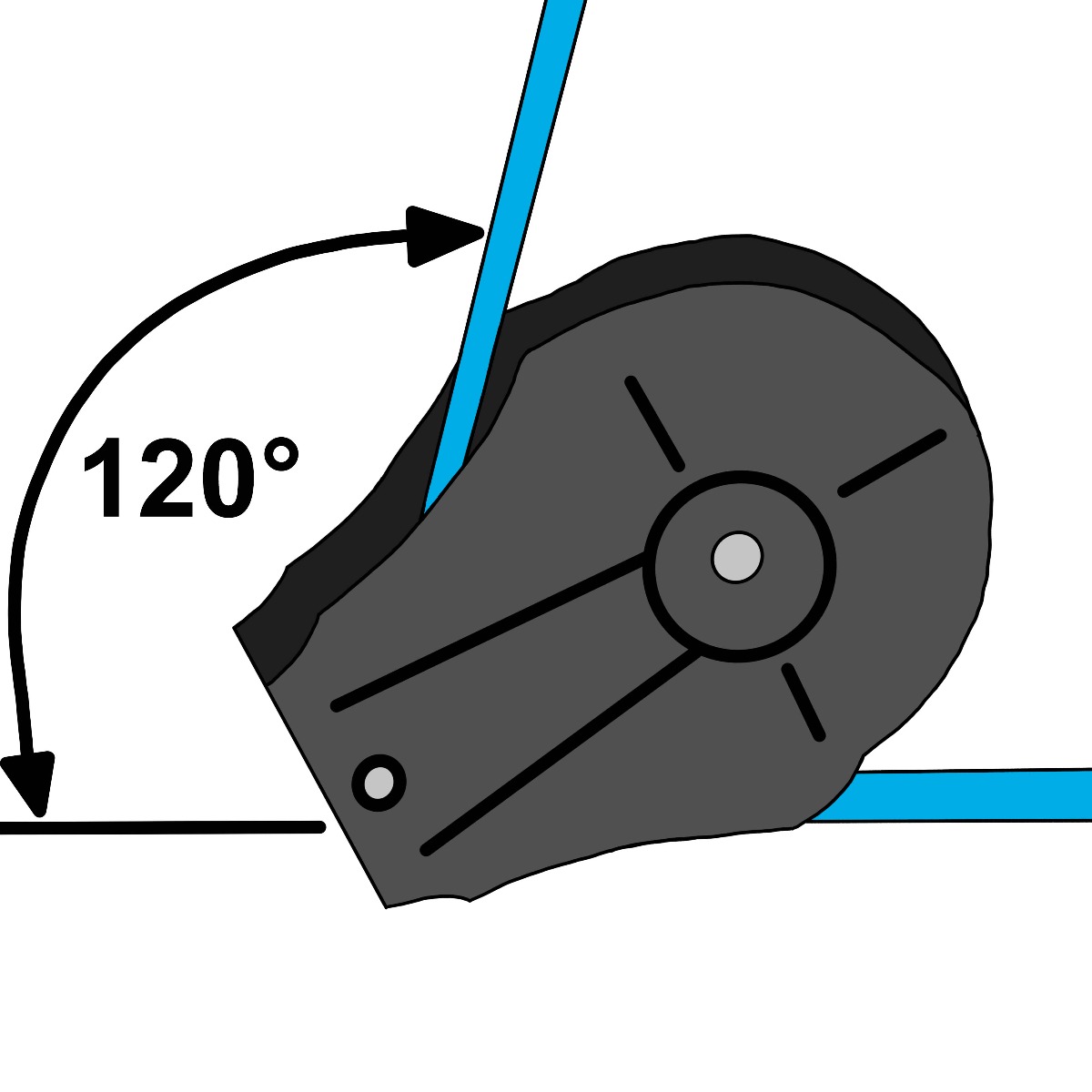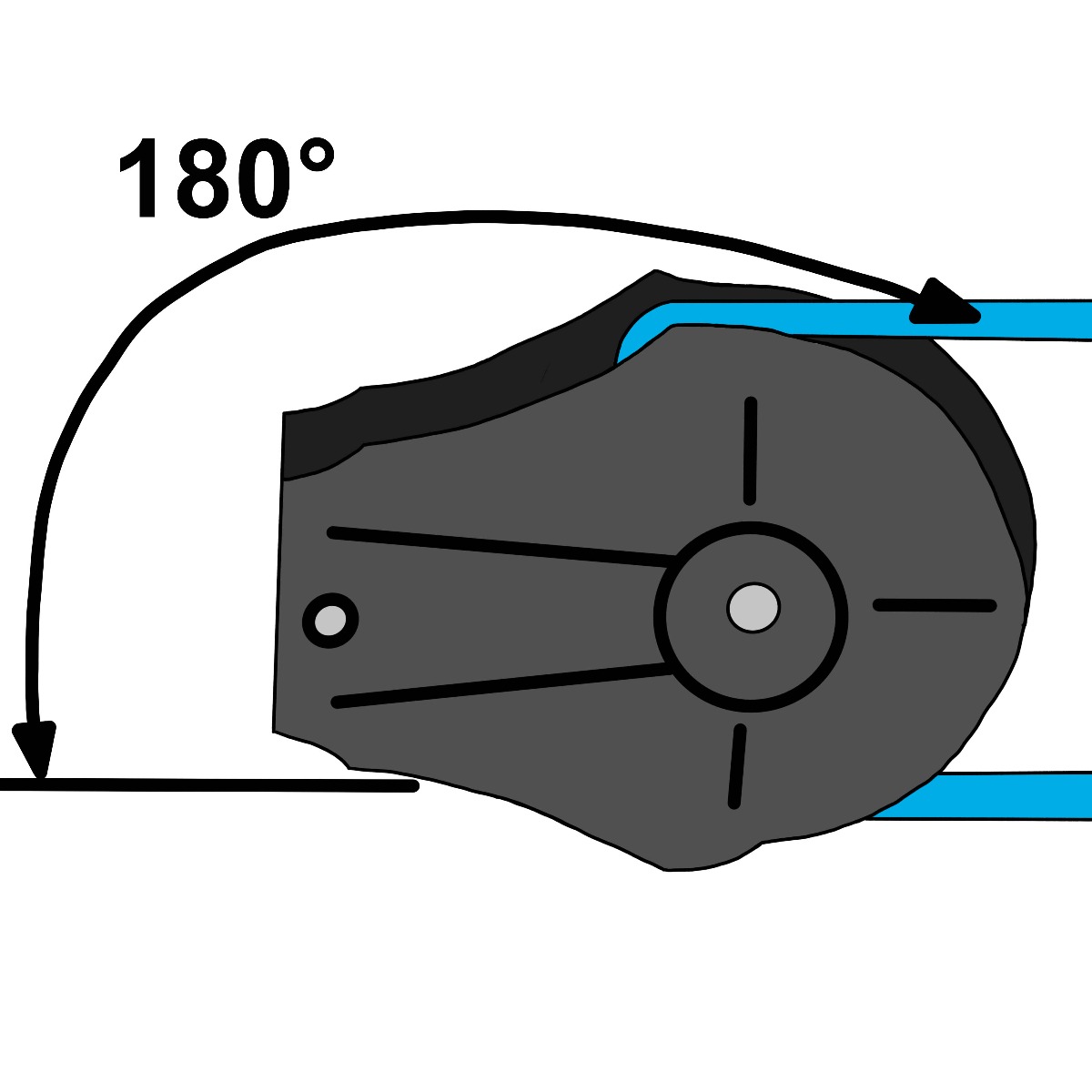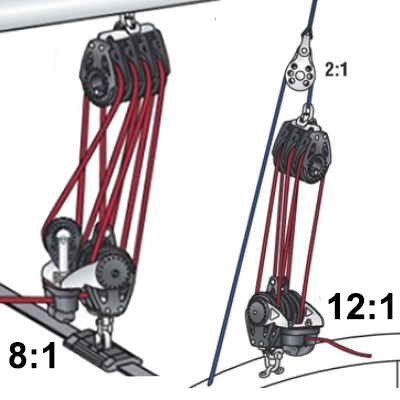Hardware advice
Premiumropes sells the top brands in deck hardware like: Harken, Wichard, Tylaska, Ronstan, Spinlock, Clam Cleat and Seldén. Our expert team is happy to advise you on what clutch, block, cleat, winch, furler or shackle will work best on board of your sailing boat. Contact us via email or call at +31 20 419 6412.
Blocks: what load should it carry?
A good starting point is to calculate the load a rope carries. For halyards and sheet the load (in kg) is roughly 30 times the sail surface (in m2). For spinnakers, we multiply the sail surface with 13. We have more detailed information about breaking strengths and formulas of ropes here.
Deflection angle
The load factor on blocks depends on the deflection angle of the rope. If the rope goes back straigth to to the side where it came from, it basically pulls on the same side twice. This makes the load factor 2. This is often the case for spinnaker blocks on the rear end of sailing boats. If the rope goes through the block under an angle of 45°, the load factor is 0.75. This means that the actual load on the block is lower than on the rope. Think of a genoa lead car for example.
| Deflection angle | Load factor |
|---|---|
| 20° | 0.35 |
| 45° | 0.75 |
| 90° | 1.4 |
| 120° | 1.8 |
| 180° | 2 |




Purchase systems
We advise to calculate with a maximum of 30 kg pulling strength. If your rope load is maximum at 240 kg, this requires a 1:8 purchase. For a mainsheet or backstay block, we would in this example choose a block with 4 sheaves. If you have higher working loads, we advise a cascaded purchase. See some examples of purchase systems in the drawing (credits: Harken) below. We are happy to advise you on the choice of blocks for your sailing yacht.
Clutches: problem solving
A rope and a clutch are a critical combination. It is important to choose the right clutch size for your ropes. Check the specifications of the manufacturer of the clutch or contact us for advice. The part that jams to hold the rope, called the cam, can be replaced with a smaller or larger one. The cam can also be upgraded from aluminum to a ceramic covered cam. The latter has more holding grip, but should only be used with a Technora cover. Read more about the various Spinlock clutches here.
Want to replace polyester halyards with ropes with a core of superfibres like Dyneema®, Spectra or Stirotex? Bear in mind that you will get more tension on the clutches. A rope with a polyester core takes some of the force of wind gusts because it has more stretch. With Dyneema® ropes, all the force is transferred to the clutch. That's why there are specialised clutches for Dyneema® ropes. They are bigger and stronger, and have a larger cam surface to hold the rope.
Does a rope slip in the clutch?
Then your line is probably too thin for the clutch. Replace either the rope or the clutch. It is also possible to add an extra cover or core to your rope. We advise our TN-Cover made of Technora to splice over the rope for better holding in clutches and jammers. When you add this cover it will add to the durability of the halyard or sheet.
Does a rope damage in the clutch?
In that case, the clutch is probably too light for the rope. A new halyard could be worn through in one day when it slips in a clutch. It could also be that the cam is worn out. The cam is the part that jams to hold the rope. Even if it is damaged a little, it may work like a knife on your rope. We therefore advise to check the cams annually and replace them if needed.


